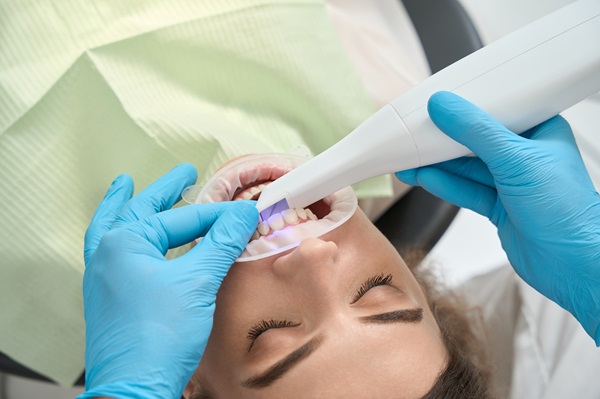Are you dreading an upcoming tooth extraction? It’s natural to wonder about the pain that accompanies the procedure. After all, the thought of having a tooth pulled can evoke images of discomfort and anxiety. But is tooth extraction really painful?
Don’t fret! Because we’re here to provide you with the answers and reassurance you seek. In this blog, we’ll explore the ins and outs of the procedure, debunk common misconceptions surrounding tooth extraction pain, and reveal the pain management options that will ensure your experience is as comfortable as possible.
Let’s get started.
Is Tooth Extraction Painful?
The thought of undergoing a tooth extraction can be anxiety-inducing for many individuals. However, it’s important to understand that tooth extraction procedures have come a long way, and advancements in dentistry have made the process much more comfortable than you might imagine.
When it comes to the question of whether tooth extraction is painful, the answer is not a simple yes or no. The level of discomfort experienced during a tooth extraction can vary from person to person, depending on several factors, including the complexity of the extraction and your pain tolerance.
In most cases, the actual extraction itself should not cause any pain. Your dentist will administer local anaesthetic to numb the area around the tooth, ensuring that you don’t feel any pain during the procedure. You may, however, feel pressure or some tugging sensations as the dentist works to remove the tooth.
It’s worth noting that after the procedure, once the effect of the anaesthesia wears off, you may experience some discomfort and soreness at the extraction site. This is a normal part of the healing process, and your dentist will provide you with instructions on how to manage any post-extraction pain.
Tooth Extraction Procedure
While every extraction may vary depending on the specific circumstances, here is a general overview of what you can expect during a typical tooth extraction procedure:
Examination and Assessment: Before proceeding with the extraction, your dentist will conduct a thorough examination of the affected tooth and the surrounding area. X-rays may be taken to assess the tooth’s position, root structure, and any potential complications.
Anesthesia Administration: To ensure your comfort during the procedure, a local anaesthetic will be administered. This numbs the area around the tooth, preventing you from feeling pain or discomfort during the extraction. In some cases, general anaesthetic may be used for more complex extractions or patients with dental anxiety.
Tooth Loosening: Once the area is numbed, your dentist will use specialised dental instruments to loosen the tooth from its socket. This may involve gently rocking the tooth back and forth to widen the socket and separate it from the surrounding tissues.
Extraction: After the tooth is sufficiently loosened, your dentist will use dental forceps to grasp the tooth and carefully remove it from the socket. You may feel some pressure during this process, but it should not be painful.
Post-Extraction Care: Once the tooth is removed, your dentist may need to clean the extraction site, removing any debris or infected tissue. In some cases, stitches may be required to close the wound. Your dentist will provide you with detailed instructions on how to care for the extraction site and promote proper healing.
It is essential to remember that every tooth extraction is unique, and the procedure may vary depending on factors such as the tooth’s condition, its location in the mouth, and your overall oral health. Your dentist will tailor the procedure to your specific needs, ensuring your safety and comfort throughout.
When Do You Need Tooth Extraction?
Tooth extraction may be necessary in the following situations:
- Severe Tooth Decay: When a tooth is extensively decayed or damaged beyond repair.
- Impacted Wisdom Teeth: When wisdom teeth do not have enough space to fully erupt or align properly.
- Overcrowding: In orthodontic treatment, extraction may be required to create space for proper alignment.
- Periodontal Disease: Advanced gum disease leading to loosening and weakening of supporting structures.
- Fractured or Cracked Teeth: Teeth with significant fractures or cracks, especially below the gumline.
- Dental Trauma: Teeth severely damaged due to accidents or injuries.
5 Care Tips After Tooth Extraction
To minimise any potential complications and ensure a successful healing process, make sure to follow proper care instructions as suggested by your dentist. Here are five essential care tips to remember after tooth extraction:
1. Take your pain medication as prescribed
Your dentist will prescribe pain medication to help alleviate any post-extraction pain. It’s important to follow the prescribed dosage and timing instructions. By taking your pain medication as directed, you can control pain and promote a more comfortable and smooth recovery.
2. Do not rinse your mouth, spit forcefully, or drink from a straw
Rinse your mouth gently with salt water after the first 24 hours, as advised by your dentist. However, during the initial healing period, typically the first day or two, avoid rinsing vigorously, spitting forcefully, or using a straw. These actions can dislodge the blood clot that forms in the extraction site, leading to a painful condition known as dry socket.
3. Avoid partaking in poor dental habits, like using tobacco products or drinking alcohol
Refrain from using tobacco products, as they can delay healing and increase the risk of complications. In addition, avoid consuming alcohol, as it can interfere with the healing process and interact negatively with any prescribed medications.
4. Eat soft foods, like soup and yoghourt
After tooth extraction, your mouth may be sensitive and require a modified diet. Stick to soft foods that don’t require excessive chewing, such as soups, yoghurt, mashed potatoes, and smoothies. Avoid hot and spicy foods, as well as hard and crunchy items that can irritate the extraction site or get stuck in the socket.
5. Do not brush or floss the extraction site
Be gentle when brushing and flossing the rest of your teeth, ensuring you don’t disturb the area of the extraction. Once your dentist gives you the green signal, you can gradually resume normal oral hygiene practices.
Following these care tips will help promote healing, minimise discomfort, and reduce the risk of complications after tooth extraction. Most importantly, if you have any concerns or questions during your recovery, don’t hesitate to reach out to your dentist for guidance and support.
How Long Does Pain Last After Tooth Extraction?
Remember, every individual’s pain tolerance and recovery experience may differ. While some people may experience minimal discomfort, others may have a slightly more challenging recovery. The key is to communicate openly with your dentist about any concerns or pain you may be experiencing, as they can provide personalised guidance and recommendations to ensure your comfort and swift recovery.
Generally, it is advisable to schedule a minimum of two to three days off from work or school following a dental extraction procedure, especially if multiple teeth are being removed simultaneously. This time frame allows for crucial rest and recovery, enabling the gums to heal effectively. Engaging in excessive activity can disrupt the blood clot formation in the extraction socket, leading to potential pain and complications that may impede the healing process.
Tooth Extraction Pain Management Options
During a tooth extraction procedure, different pain management options are available to ensure your comfort. The most common method is the administration of local anaesthesia. This involves injecting an anaesthetic agent into the surrounding tissues of the tooth, numbing the area and ensuring you won’t feel any pain during the extraction. However, you may still experience some pressure or sensations.
For patients with dental anxiety or complex extractions such as wisdom tooth removal, conscious sedation may be used. This can involve the use of oral sedatives or intravenous (IV) sedation. While under conscious sedation, you’ll remain awake and responsive, but in a deeply relaxed state. Your dentist will closely monitor you throughout the procedure to ensure your safety and comfort.
In certain cases, such as complex surgical extractions or multiple teeth removal, general anaesthesia may be recommended. This is typically administered in a hospital setting by an anesthesiologist. General anaesthesia induces deep sleep, and you won’t be aware of the procedure or experience any pain.
At Bellevue Hill Dental, we offer a range of sedation and anaesthesia options to minimise any discomfort you may experience. Our team of gentle dentists is dedicated to supporting you every step of the way, ensuring that you feel at ease and well-cared for during your tooth extraction procedure.
Post-Extraction Pain Management
Following the tooth extraction, your dentist may prescribe pain medications or recommend over-the-counter pain relievers to alleviate any soreness or discomfort. In addition, applying cold compresses or ice packs to the cheek on the affected side can also help reduce swelling and alleviate pain. Make sure to wrap the cold pack in a cloth to protect your skin and apply it in intervals of about 15 minutes.
These pain management options and techniques are designed to ensure your comfort and minimise any discomfort during and after the tooth extraction procedure. Your dentist will work with you to determine the most suitable approach based on your specific needs and preferences.
Experience Gentle Dental Care with Bellevue Hill Dental
At Bellevue Hill Dental, your well being is our top priority. We believe in taking a conservative approach to oral health and carefully evaluating each case to determine the most appropriate course of action. Our team diligently explores all possible alternative treatments to preserve your natural teeth whenever possible. As such, we only consider tooth extraction when no other treatment options are suitable.
Contact us today to experience gentle dental care that puts your needs first.



